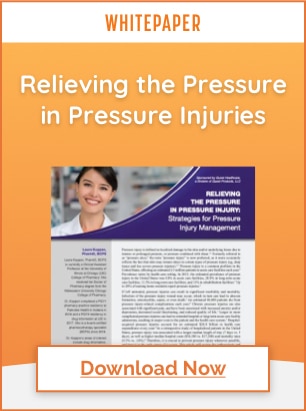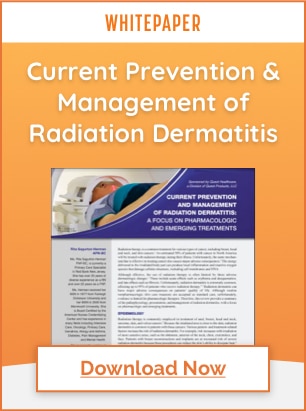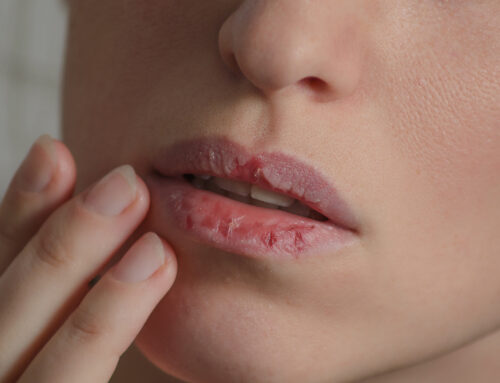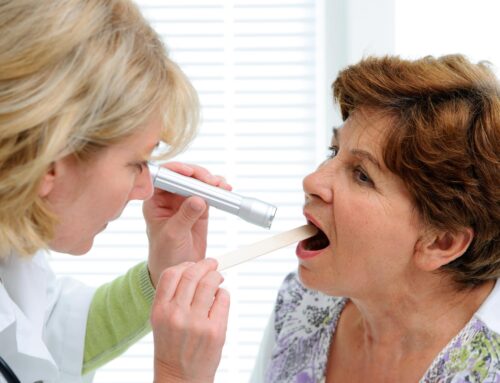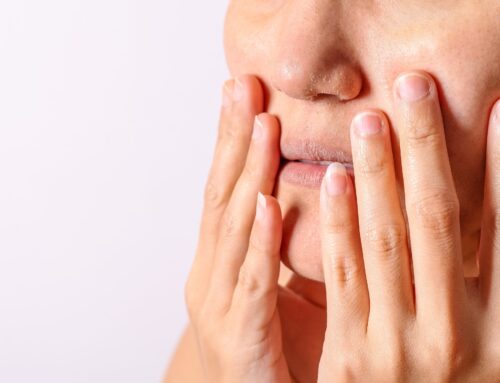
Pressure Injuries are Costly to Patients and Providers
Despite increasing awareness about the medical and financial cost of pressure injuries (PI) to patients and the healthcare system, with a global prevalence of 13.69% and a period prevalence of 9.22% incidents of PI continue to be on the rise1.
Pressure injuries cause discomfort, disease, and even death in patients. Patients with PI have an estimated two times higher mortality risk compared to those without PI2.
According to a 2022 report by the National Pressure Injury Advisory Panel (NPIAP), pressure injuries are responsible for approximately 60,000 deaths and $26.8 billion in acute costs every year3.
Risk Factors for Developing Pressure Injuries
Common causes of pressure injuries include both extrinsic and intrinsic factors4.
PI is common with people who have impaired mobility, such as the elderly, people with spinal cord injury (SCI), traumatic brain injury, and others in the long-term care (LTC) setting.
Extrinsic factors:
- Moisture
- Pressure
- Shear / Friction
- Impaired Mobility
- Abnormal Posture
- In-patient, long-term, or acute care setting
Intrinsic factors:
- Patient’s age
- Nutritional Status
- Skin Integrity
- Decreased or absent sensations
- Bladder and Bowel Control
- Altered Consciousness
The Cost to the Healthcare System
In addition to the pain, suffering, and reduced quality of life pressure injuries cause patients, they also put significant financial strain on the healthcare system.
By way of example9, a 300-bed acute facility with a 2.4% PI incidence rate spends about $14 million/year on PI prevention and treatment.
According to the NPIAP, pressure injuries are the most common malpractice claim in the United States and many cases settle for more than $1 million3.
Treatment of Pressure Injuries
Treatment of pressure injuries requires a multidisciplinary approach that includes nurses, physicians, and other members of a patient’s care team.
It’s important to have treatment interventions that include management of conditions that can give rise to pressure injuries, including6:
- Support surface use
- Heel elevation
- Nutritional support
- Surgical repair of the wound
- Moisture management
- Head-of-bed elevation
- Repositioning
- Bladder and Bowel Care Management Program
Fecal Incontinence and Pressure Injuries
Moisture buildup due to bowel incontinence is a common cause of pressure injury.
Bowel incontinence, also known as anal incontinence, is the unintentional loss of liquid, formed stool, and/or gas. It ranges from occasional leakage to complete loss of bowel control. ‘True’ anal incontinence is the loss of anal sphincter control leading to the untimely (and unwanted) release of feces.
According to a 2016 study7 the risk of developing a pressure injury is about 4x higher in incontinent patients.
To reduce the risk of pressure injury caused by fecal incontinence, it’s essential for patients to have an effective, regular bowel management program to reduce the risk of fecal accidents and the buildup of moisture that can lead to PI.
ALOCANE® Plus: Relief for Pain and Discomfort Due to Pressure Injuries
ALOCANE® Plus can relieve pain and itching associated with early-stage pressure injuries, dermatitis, sutures/staples, first-degree burns, psoriasis, eczema and shingles. It forms a protective barrier on the site of the injury and lidocaine provides fast, localized pain relief.
ALOCANE® Plus is a topical ointment containing 4% lidocaine (a topical analgesic) and 0.13% benzalkonium chloride (a topical antiseptic), along with other ingredients such as aloe vera and tocopherol acetate (vitamin E). Lidocaine is a local anesthetic that exerts its analgesic effects through the inhibition of voltage-gated sodium channels in neurons, thus preventing the generation and conduction of nerve impulses. Benzalkonium chloride significantly reduces germs commonly associated with skin infections. Read all package directions before use.
Click here to download our Whitepaper, ‘Relieving the Pressure in Pressure Injury: Strategies for Pressure Injury Management,’ to learn more about how ALOCANE® Plus can help.
Disclaimer: The material contained is for reference purposes only. Quest Healthcare, A Division of Quest Products, LLC, does not assume responsibility for patient care. Consult a physician prior to use. Copyright Quest Healthcare, A Division of Quest Products, LLC.
SOURCES:
- 2023 Resolutions: It’s time to revamp your pressure injury prevention programs – Lynda Kennepp, 2023 (sagepub.com)
- The relationship between pressure injury complication and mortality risk of older patients in follow‐up: A systematic review and meta‐analysis – PMC (nih.gov).
- Microsoft Word – NPIAP Word Fact Sheet 08MAR2021.docx (ymaws.com)
- Wound Pressure Injury Management – StatPearls – NCBI Bookshelf (nih.gov)
- Pressure Ulcers: More Lethal Than We Thought? : Advances in Skin & Wound Care (lww.com)
- Implementation of Pressure Injury Prevention Strategies in Acute Care – PMC (nih.gov)
- Pressure Ulcer Risk in the Incontinent Patient: Analysis of Incontinence and Hospital-Acquired Pressure Ulcers From the International Pressure Ulcer Prevalence™ Survey – PubMed (nih.gov)
- Perineal dermatitis in critical care patients. American Association of Critical Care Nurses, 27, 42-46. Maklebust JA, Magnan MA. Risk factors associated with having a pressure ulcer: a secondary data analysis. Adv Wound Care. 1994;7(5):25–42. Driver, D. (2007). Ermer-Seltun, J. (2011, February 18).
- Pressure ulcers cost the health system $26.8 billion a year | Healthcare Finance News

